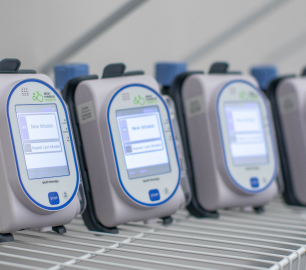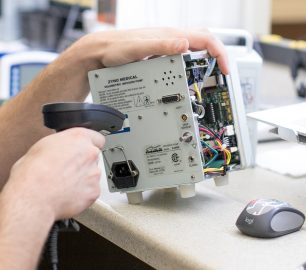Specialty Infusion Clinics (SICs) can cut the cost of specialty drug infusions by half. America spent a staggering 3.3 trillion dollars on healthcare in 2016, representing the most expensive health system on the planet. 1.1 trillion (32%) of our overall expense was incurred from hospital based care. A large driver of hospital costs are specialty drugs, administered in hospital based infusion centers. Hospital pharmacy costs have increased 71% over the past 5 years. The top 25 most expensive drugs (almost all specialty) make up 71% of our annual drug expense, which is driving up hospital pharmacy spend. This number is only expected to grow in the future. Even more alarming are the apparent inefficiencies in our current structure, representing a clear opportunity for reducing healthcare spend. SICs are one of the leading options for more cost effective treatment. SICs administer specialty drugs for patients with rare or complicated diseases. SICs aren’t the only options available for this treatment however. Specialty infusions are still widely obtained through hospital based infusion centers (HICs), often due to a lack of available alternatives. Today, hospital spend on specialty drugs represents one of our nations largest opportunities for reducing healthcare expense.
Our nation’s most expensive drugs fall into the specialty category. Most of these drugs are required to be administered via infusion. SICs are focused on providing care to patients with the rare or complicated diseases that require specialty medication. Gastroenterology, neurology, allergy and immunology, infectious disease and oncology all represent healthcare specialties that currently operate SICs for patients to receive their treatment.
However, SICs aren’t available to every patient who could benefit from their service. SICs are typically established where there is a higher demand for specialty treatment within a geographical region. In some remote areas, where specialty infusion needs are less common, access to treatment is limited to the closest hospital. Based upon serving a larger and more diverse patient population, hospital infusion centers (HICs) aren’t designed to specialize in the treatment of any one disease, but rather provide a broad focus tailored to the diversity of treatments required in a hospital. It’s estimated 9 out of 10 patients admitted to hospitals will require an infusion of some sort, but most of the drugs HICs claim are basic (non-specialty) drugs. HICs have access to the same specialty drugs that SICs do, but they dispense them far less frequently. Some HICs can go weeks, months or even years without admitting any specialty patients.
The price disparity on specialty drugs between SICs and HICs is rooted in multiple factors. When drugs are requested by a new or existing provider, rarity, necessity, competition, and availability are a few of the key drivers in how practices are billed. When considering these factors, there is much more incentive for SICs to be offered lower prices on these more expensive specialty drugs. Because SICs order a smaller variety of drugs far more consistently, the incentive for pharmaceutical manufacturers to make their drug less expensive is far greater. Specialty drug companies want to make their products more attractive to the practices that order them more often, dissuading them from sourcing other more economical alternatives.
Specialty drugs are often required for patients who have chronic or even fatal conditions, and who cannot go without the treatment. In scenarios where an SIC isn’t available to a patient with a rare disease, they are forced to the hospital. Hospitals will ensure the patient receives the medication they need, but the patient will often pay much more in out-of-pocket expenses for the treatment.
SIC’s provide an excellent opportunity that should be explored deeper. There are areas in this country where patients with specialty needs have no other option than the hospital. To evaluate geographies of opportunity, one can look at SIC availability in relation to the local population. Consider an example, focused on Rheumatoid Arthritis (RA). RA affects roughly 0.6% of America’s population. In Columbus, Ohio there are 5 standalone SICs that offer infusions for the local RA population, which is estimated to be 12,000 people. On the other hand, in El Paso, Texas, there are 0 standalone SICs. We can estimate that there are 5,000 patients with RA in El Paso, and they must all go to a hospital for their infusion needs. Considering that 5 SICs can function to support Columbus’ populous, than surely El Paso could benefit from at least one.
Trying to identify new areas where a SIC could be supported will drive down healthcare costs on our most expensive drugs. There are areas with populous that need specialty treatment, but only have a hospital to receive it. Identifying these opportunities and starting SICs in accessible locations will significantly reduce specialty infusion costs. Specialty home infusion is another potential option for the most rural areas, which is another topic worth exploring. We have already seen success in setting up alternative sites for specialty infusions, but we need to expand the network so it’s fully accessible, and every area’s potential has been explored.
Some argue that our national healthcare expense is a necessity in providing each of our citizens’ access to the high level of healthcare that we provide. This argument is valid in many ways. Conversely, there are some processes that are still inefficient due to the complexity and lack of awareness that are associated with the expenses that they incur. Prioritizing establishment of SICs would ensure that patients in need of specialty treatment can get the care they need while making the entire system more efficient as a whole.



